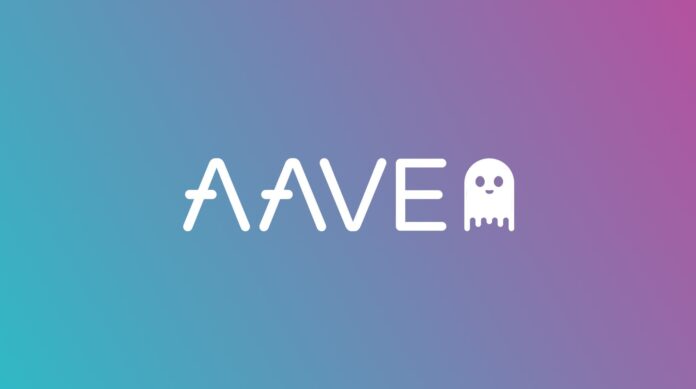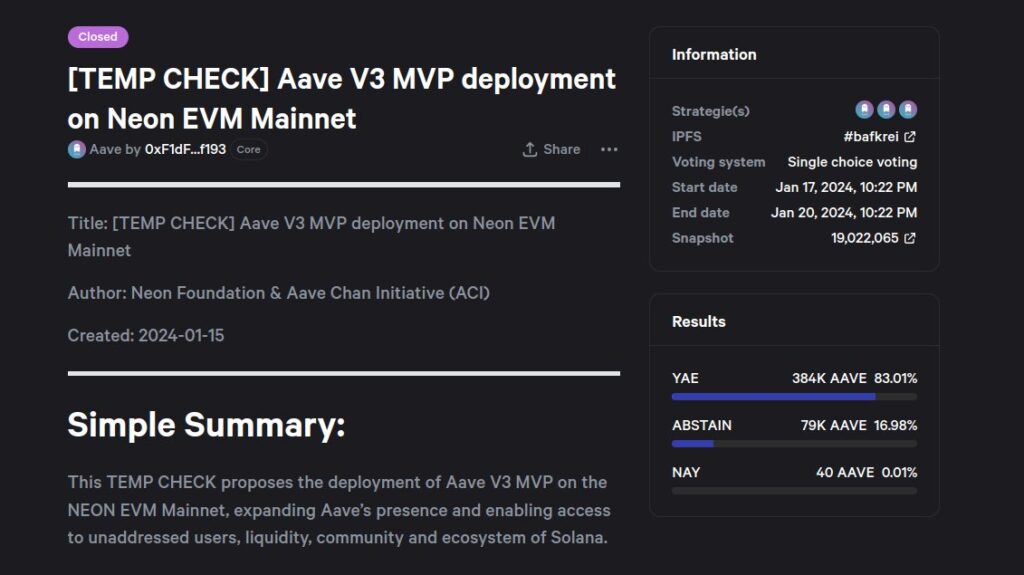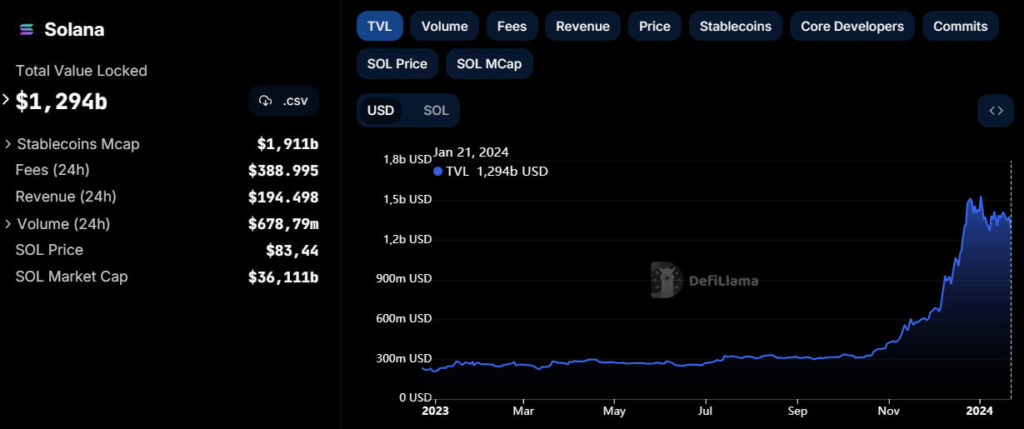
The governance proposal to integrate Aave with Neon EVM was successfully approved by the crypto community. Now the developers are preparing to conduct a technical assessment and analyze the risk of this implementation.
Ethereum's decentralized protocol Aave will be deployed on the scalability-focused Solana blockchain.
The DeFi lending protocol's governance has successfully approved a proposal submitted by the Aave and Neon development teams, which is presented as an Ethereum Virtual Machine (EVM) on Solana.
Last week, developers from both projects launched a “temp check” vote, known as temperature voting, to verify the level of acceptance of the crypto community to this proposal.
According to the results of the vote, 83% of the Aave crypto community agrees to implement the Ethereum lending protocol on the Solana blockchain.

The implementation of Aave on Solana is a pioneering initiative that seeks to take advantage of the benefits of this blockchain ecosystem, which offers access to a scalable, fast and low-cost network, to improve the capabilities and experience of Aave users.
Aave is a project that has pioneered the development of the decentralized finance or DeFi sector. This protocol, which operates as a liquidity market without intermediaries, allows users to lend and borrow different crypto assets, thus promoting a more open and inclusive financial system on the blockchain.
It will begin with a technical evaluation
The governance proposal presented by Neon proposes the deployment of the third version of the protocol, Aave v3, with the Neon virtual machine, compatible with Solana, with the aim of creating a bridge between these two blockchain ecosystems, which will open the doors to new possibilities of liquidity, performance and diversification, both for lenders and borrowers of the protocol.
According to the developers, the implementation of Aave on Solana, if finally approved by the crypto community, will be done gradually and cautiously. In the governance proposal, the developers noted that they would start with a limited set of assets and conservative risk parameters, to ensure the security and stability of the protocol at all times.
Recently, the Neon team confirmed that they will be conducting a technical and risk assessment of implementing Aave on Neon.
“We passed the TEMP CHECK stage of our Aave proposal, reaching the required quorum of YAE votes on the snapshot. Next up is the ARFC phase, a technical and risk assessment of implementing Aave on Neon. One step closer!”, the project developers wrote in X.
In the proposal that was recently voted on, the creators suggest the implementation of certain cryptoassets, such as SOL, mSOL and jitoSOL, as collateral, and the stablecoin USDC, as the only loanable asset.
The potential of Solana's DeFi market
Solana's DeFi ecosystem is currently worth over $1.000 billion, representing a growth of over 400% so far this year, according to data from the DefiLlama platform.

Source: DeFi Llama
According to the proposal, the goal of the implementation is to enable the protocol to scale by leveraging Solana’s vibrant DeFi market and the liquidity available on the network, along with the advantages of the Neon EVM, to grow its user base and community.
On the other hand, Neon developers highlighted that the arrival of a prominent protocol such as Aave, to its ecosystem and Solana, will strengthen the DeFi sector within this blockchain network.
The Aave community has the opportunity to vote on the implementation of the proposal in the blockchain phase. If approved, it will boost the Aave community’s adaptability to the crypto space and help the protocol, which has accumulated a TVL of over $5.000 billion, expand its reach in the blockchain ecosystem.
To date, Aave v3 has already been deployed on 8 different networks, including Ethereum, Polygon, Optimism, Avalanche, and Arbitrum.
Continue reading: Aave renames its parent company Avara



